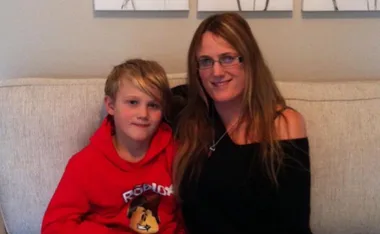Pears are possibly the easiest fruit tree to grow (although, arguably, plums could compete for that spot!). It’s hard to kill a pear tree. As long as your climate gets some frosts each winter — in other words, as far north as Brisbane — you can grow a pear tree.
In subtropics and tropics, though, you’re best advised to grow one of the available varieties of Nashi pear, a Japanese breed that needs less chilling than old-fashioned European pears and has apple-crisp fruit. Look for one of the heat-tolerant varieties. It’s hard not to get boxes of fruit, too, even if you only have one tree.
Don’t be put off if the only nashi pears you have had were rather disappointing ones from the supermarket — a Nashi pear picked and eaten from your own tree is completely different — juicy, crisp and refreshingly tasty.
If you want to be sure you get fruit, though, grow a Williams bon Chrétien pear, a popular backyard pear that is the only one sure not to need a pollinator. Better still, plant a multi-graft tree. Pears bear so prolifically that one giant tree will give you too much fruit for the average family; if it has two or three varieties ripening at different times you’re more likely to be able to cope. Or grow several varieties as single-stemmed cordons and espalier them as a productive screen anywhere sunny — the trees are planted very closely together, and pruned into thin wall so they stay small, beautful- and very productive.
Pears grow best in deep fertile soil, but they’ll cope with just about any soil that isn’t pure sand or waterlogged or salty. Pears cope with the coolest of Australian climates and while they need cool winters they will tolerate hotter summers than apples.
The one disadvantage of pear trees is that they are big, though pears grafted onto quince stock produce smaller trees. But if you don’t want to do the whole espalier thing, you can prune your pear so that it has one main trunk, and prune off the lower branches, too. That will give you a tall straight tower of blossom, leaves and fruit, and let sunlight in so you can grow other shrubs or even flowers around it. Pears are great trees to shade a kitchen window, keeping out the summer sunlight but letting the winter warmth in when they lose their leaves.
The pear you’ll usually see in supermarkets is Williams (also known as Williams bon Chrétien, Bartlett or Duchess). It’s a good soft pear that doesn’t keep well. My favourite is Beurre Bosc, a slim, brown skinned, hard fleshed pear — it’s the best for cooking (stays wonderfully firm but tender) and keeps for months wrapped in newspaper in the larder. There are many other superb pears available, including the aromatic Doyenne du Comice, a stunning pear that bruises too easily to be marketed.
Pears are easy to look after —or rather, don’t need looking after at all. Don’t bother pruning, except to keep them in shape — pears tend to grow too vigorously after pruning. Feed once a year, in early spring; too much feeding later on can lead to soft fruit that doesn’t keep so well. Mulch in harsh dry summers. Pears can get codlin moth or fruit fly. You can drape the trees with fruit fly netting, or grow late varieties that fruit in winter instead of early ones — while fruit fly will attack soft winter fruit like overripe oranges, they don’t seem attracted to hard-skinned late pears.
Pear and cherry slug is the worst problem — horrible, slimey-looking black sawfly larvae that suck the goodness from the leaves so they curl up brown and or covered in an ugly tracery. Pears are usually so vigorous they easily survive this pest, so if you don’t like spraying, plant the tree where the bit of mess won’t bother you. Othewise spray with Pestoil.
Like apples, you can pick home-grown pears over about a month or six weeks. Pick the largest fruit first; the smaller fruit will keep getting bigger.
Unlike most fruit, pears are best picked about two weeks before they are ripe, or at least soft (it will still taste sweet — if you pucker when you taste it, leave it alone). Pears become juicy as they soften. This is usually about a week after the birds have started munching it. Fruit should snap off easily without twisting.
Pears keep for weeks or even months in the fridge. Most will keep for weeks and often a lot longer wrapped in newspaper and stored in a cool dark place. A warning though: fruit fly infected fruit will go soggy and leave a mess of fermenting fruit and sodden newspaper Make sure you only store fruit that doesn’t have any blemishes.
Anyone who has a pear tree will grow used to giving baskets of fruit away to friends. Even kids who think they don’t like fruit will suddenly discover why humans have loved pears for thousands of years once they pick their own straight from the tree.
A home-grown pear is magic, an easily grown gift from the generosity of the earth.
Newsletter conversion description. Get the latest in your inbox.



.png?resize=380%2C285)
.jpg?resize=380%2C285)




.png?resize=380%2C285)














































.jpg?resize=380%2C285)
